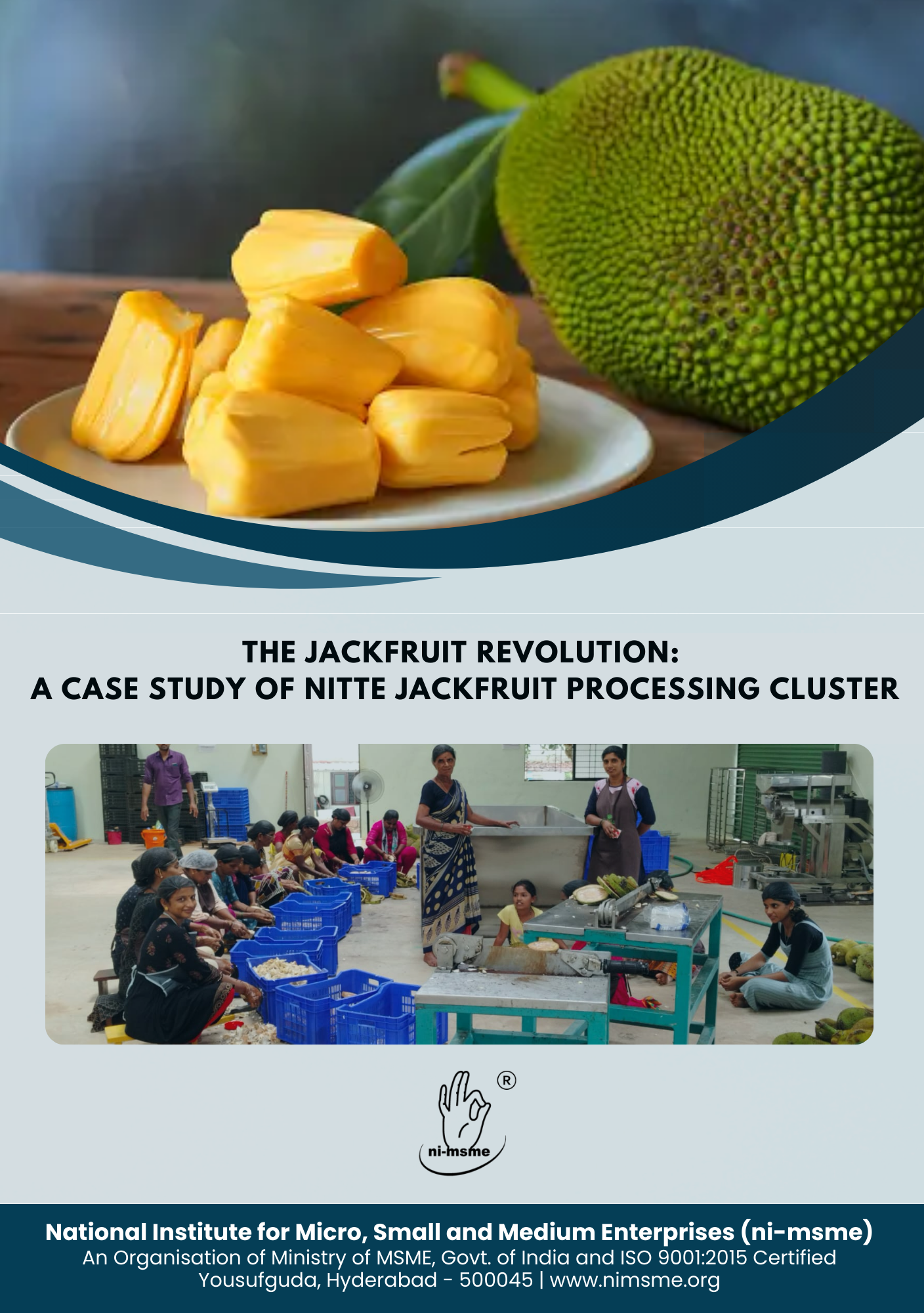
The Jackfruit Revolution: A Case Study of Nitte Jackfruit Processing Cluster
National Institute for MSME (ni-msme)
About Book
Karnataka, a significant producer of jackfruit, yields around 200,748 metric tonnes annually across 5,368 hectares. Udupi district stands out as the third highest producer, contributing 23,889 metric tonnes from 533 hectares. Despite the substantial production, over 80% of the jackfruit, valued at approximately INR 200 crores, is wasted within the state each year. Regions like Bengaluru Urban (Tubagere), Ramanagara (Janagere), and Tumakuru (Kesaramadu) offer popular varieties available year round.
While minimally processed jackfruit like chips can retain some nutrients, it's important to be mindful of processing methods. Fried jackfruit chips can be high in fat and calories. Look for options baked or vacuum-fried for a healthier alternative. Sweet jackfruit products like halwa may be high in added sugars, so consume them in moderation. The key is to choose minimally processed jackfruit products to reap the most health benefits this versatile fruit offers.
Despite the nutritional and medicinal benefits of jackfruit, its utilization remains limited. Large scale commercial cultivation is yet to be fully realized in Karnataka. Nitte Cluster Development Project aims to revolutionize the jackfruit industry by converting wasted jackfruits into value added products. This initiative not only aims to create employment opportunities for local youth and women, but also to generate continuous revenue for farmers. It also seeks to encourage local farmers to adopt high density planting techniques, which could lead to the establishment of additional processing clusters and further economic growth in the region.









